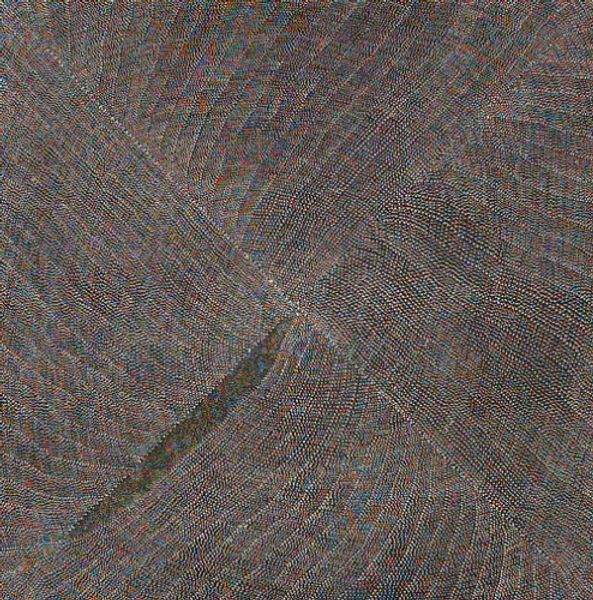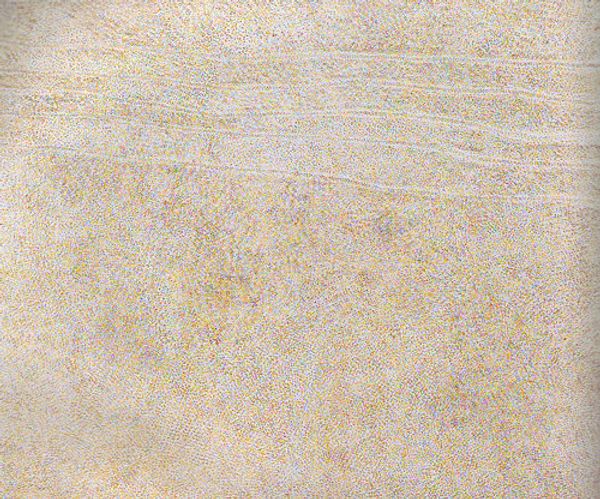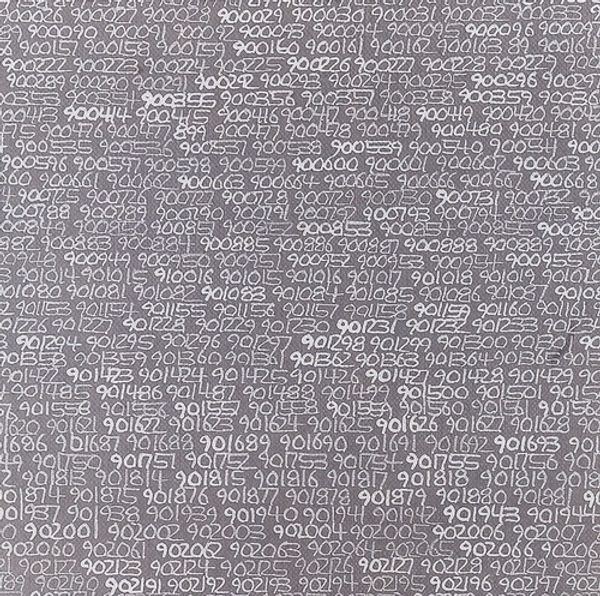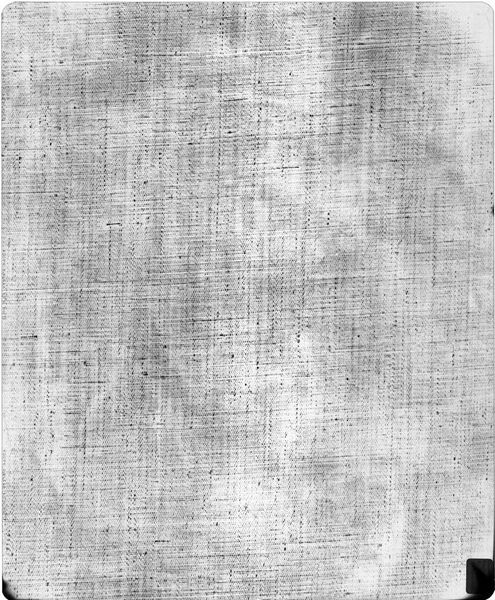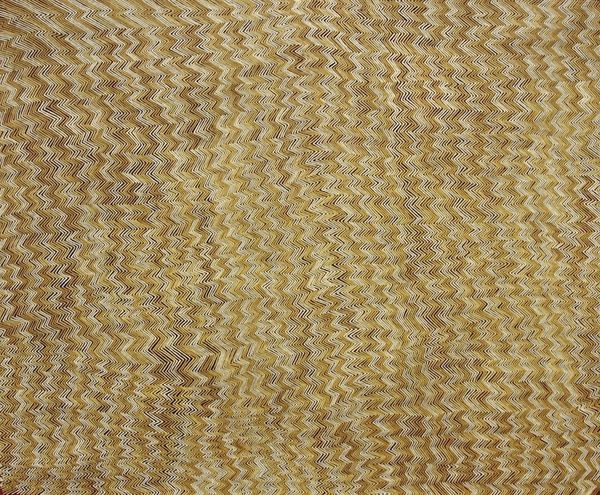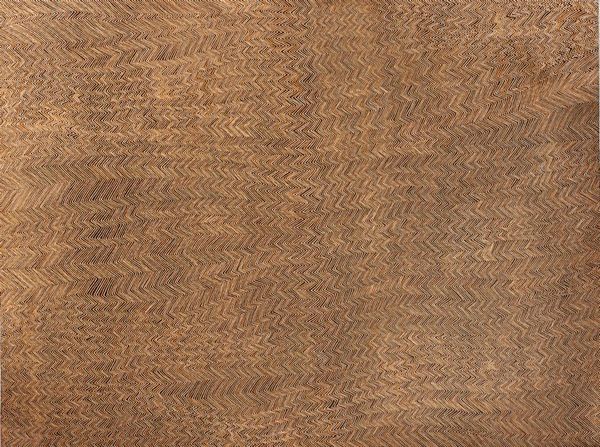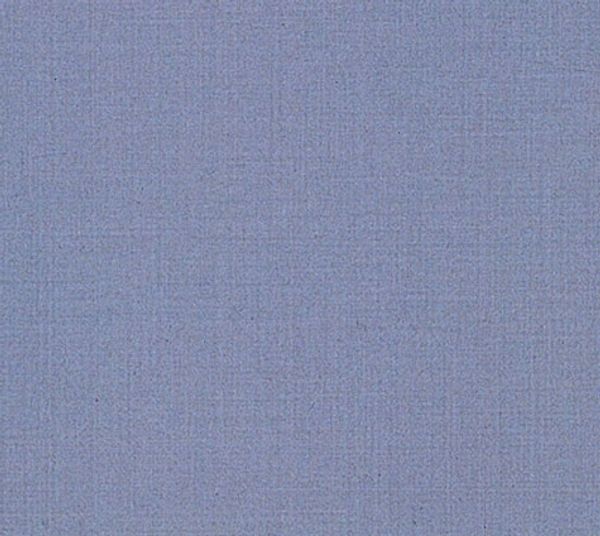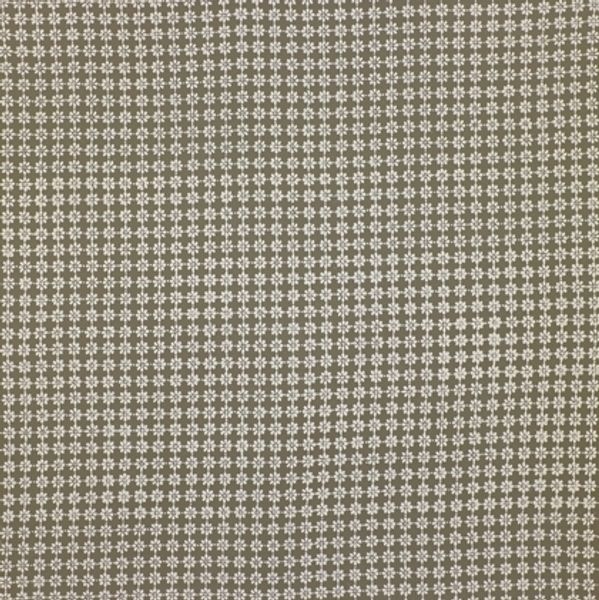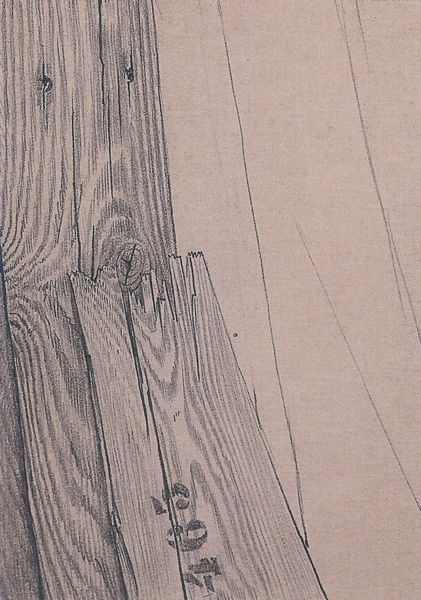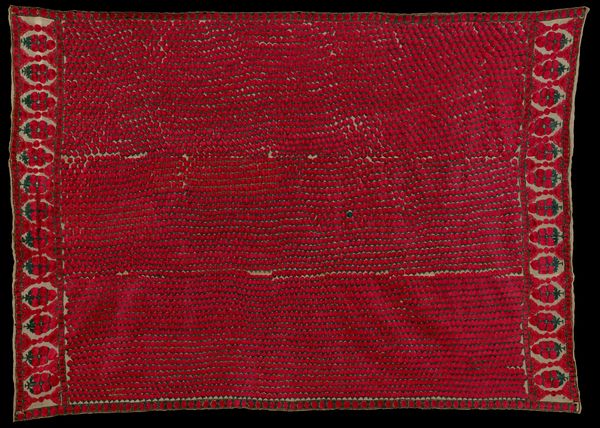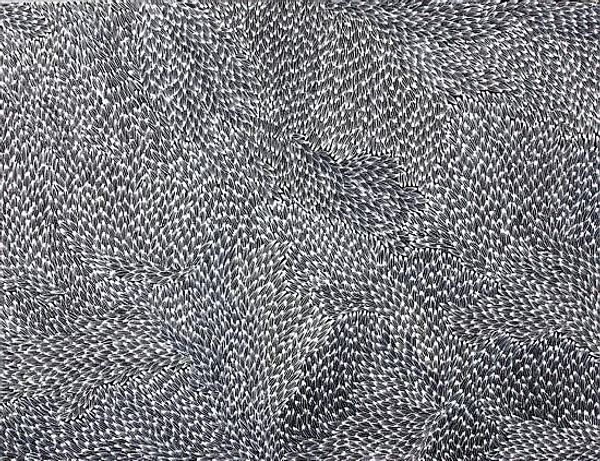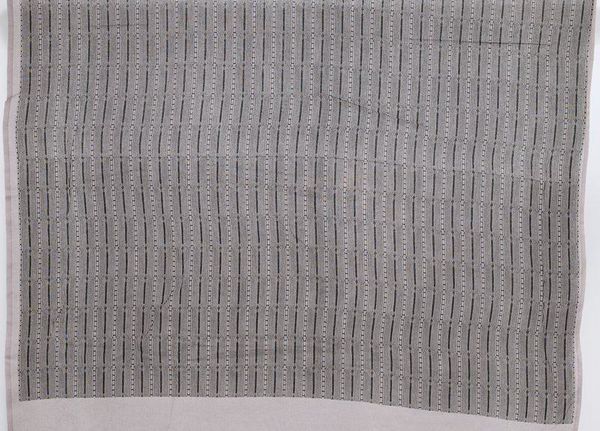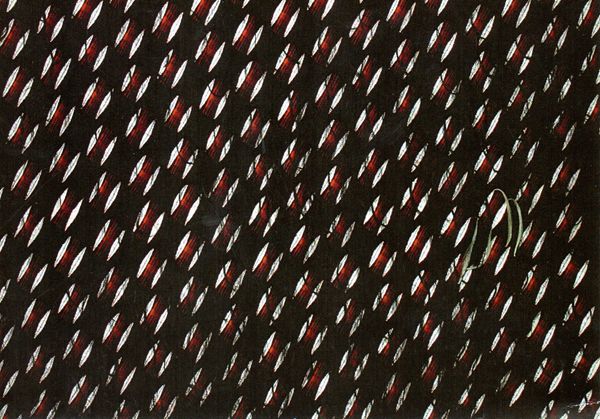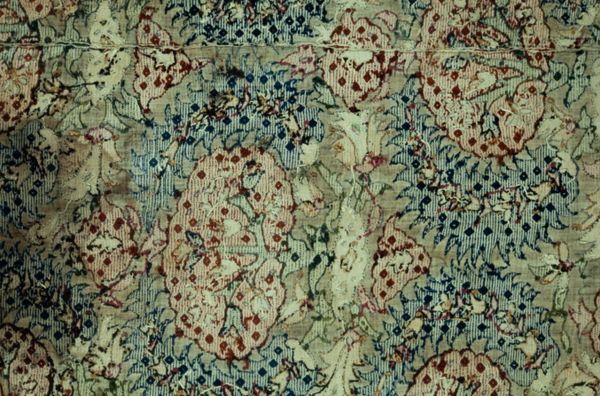
painting
#
natural stone pattern
#
naturalistic pattern
#
contemporary
#
organic
#
painting
#
geometric pattern
#
abstract pattern
#
organic pattern
#
vertical pattern
#
abstraction
#
intricate pattern
#
pattern repetition
#
layered pattern
#
organic texture
Dimensions: 86 x 91 cm
Copyright: Kathleen Petyarre,Fair Use
Editor: We're looking at Kathleen Petyarre's "Atnangkere" from 2000, made with acrylic paint. It's quite mesmerizing, almost like an aerial view of a desert landscape. All those tiny dots create such a sense of movement. What's your interpretation of this piece? Curator: This work is a fascinating example of contemporary Indigenous Australian art, and its place within the global art market raises some interesting points. These “dot paintings,” while visually appealing to Western audiences, often carry deep cultural and spiritual significance for the artists. The "dot" technique itself evolved partly as a way to disguise sacred imagery from outsiders when these works first started entering public consciousness and commercial spaces. Editor: So, is the market then inadvertently complicit in displaying culturally significant yet somewhat veiled imagery? Curator: Exactly! The success of Indigenous art on the global stage forces us to confront questions of representation, ownership, and the ethics of cultural appropriation. How do we ensure these artists are fairly compensated and their cultural integrity is respected when their art is commercialized? Do you see the inherent tensions in this? Editor: I do, the painting seems almost innocuous but it prompts these critical questions around display and cultural commodification, making you think about where and how you are viewing the work. Curator: Precisely, thinking about where art sits geographically and institutionally changes its meaning and how people appreciate it. What started as cultural expression now sparks political discourse. Editor: This definitely gives me a deeper appreciation for the work, realizing the layers of meaning and debate woven into the canvas! Curator: And that understanding is key to engaging responsibly with art, both historically and today.
Comments
No comments
Be the first to comment and join the conversation on the ultimate creative platform.
